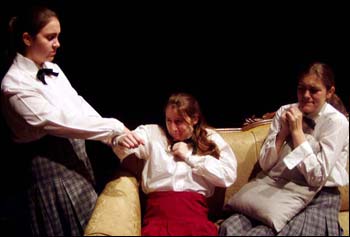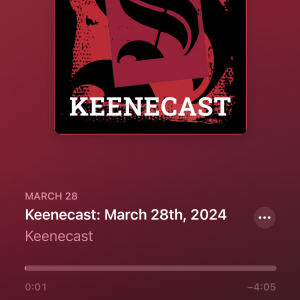Lying and Its Fallout Focus of The Children's Hour

KEENE, N.H., 10/20/06 - The Keene State Theatre department will present Lillian Hellman’s play The Children’s Hour at 7:30 p.m., Wed.-Sat., Nov. 15-18, in the Main Theatre of the Redfern Arts Center on Brickyard Pond. Tickets are $7 for the general public and $5 for senior citizens, youth age 17 or younger, and KSC students. Call the box office at 603-358-2168.
When a little girl in boarding school doesn’t get her way, she tells her grandmother - a wealthy patron of the school - that the two headmistresses have an “unnatural” relationship with each other, which the grandmother infers is salacious. The headmistresses’ work and relationships are irreparably damaged when the lie takes on a life of its own. PeggyRae Johnson directs the dramatic story.
The Children’s Hour, based on actual events in Scotland, was written as a stage play by Hellman in the early 1930s and set in America. It was made into a film in 1936, but because of strict production codes, the alleged lesbian relationship was changed into a more socially accepted, heterosexually based love triangle and renamed These Three. The play was once again made into a film in 1961, starring Audrey Hepburn and Shirley MacLaine as the headmistresses; this film was truer to the original script.
Johnson stresses that the sensationalism of the lie’s subject matter is secondary, and that the play shows just how devastating lies can be. “The myth always makes for more lurid and therefore compelling gossip than the simple lie itself,” she says. “It is the panic that ensues when the lie is believed that gives this play its universality. If we tell a lie often enough, we begin to believe its validity. Perspective can so easily and so quickly get lost amid fear and social stereotypes.”
Johnson explains that this play is truly an acting challenge, as the “action” is presented in verbal duels and relationships, the actors have limited props or movements to assist them, and they must engage the audience through their ability to tell their stories. “We’re working very hard on detailed analysis of moment-to-moment choices that assist that process,” she says.





